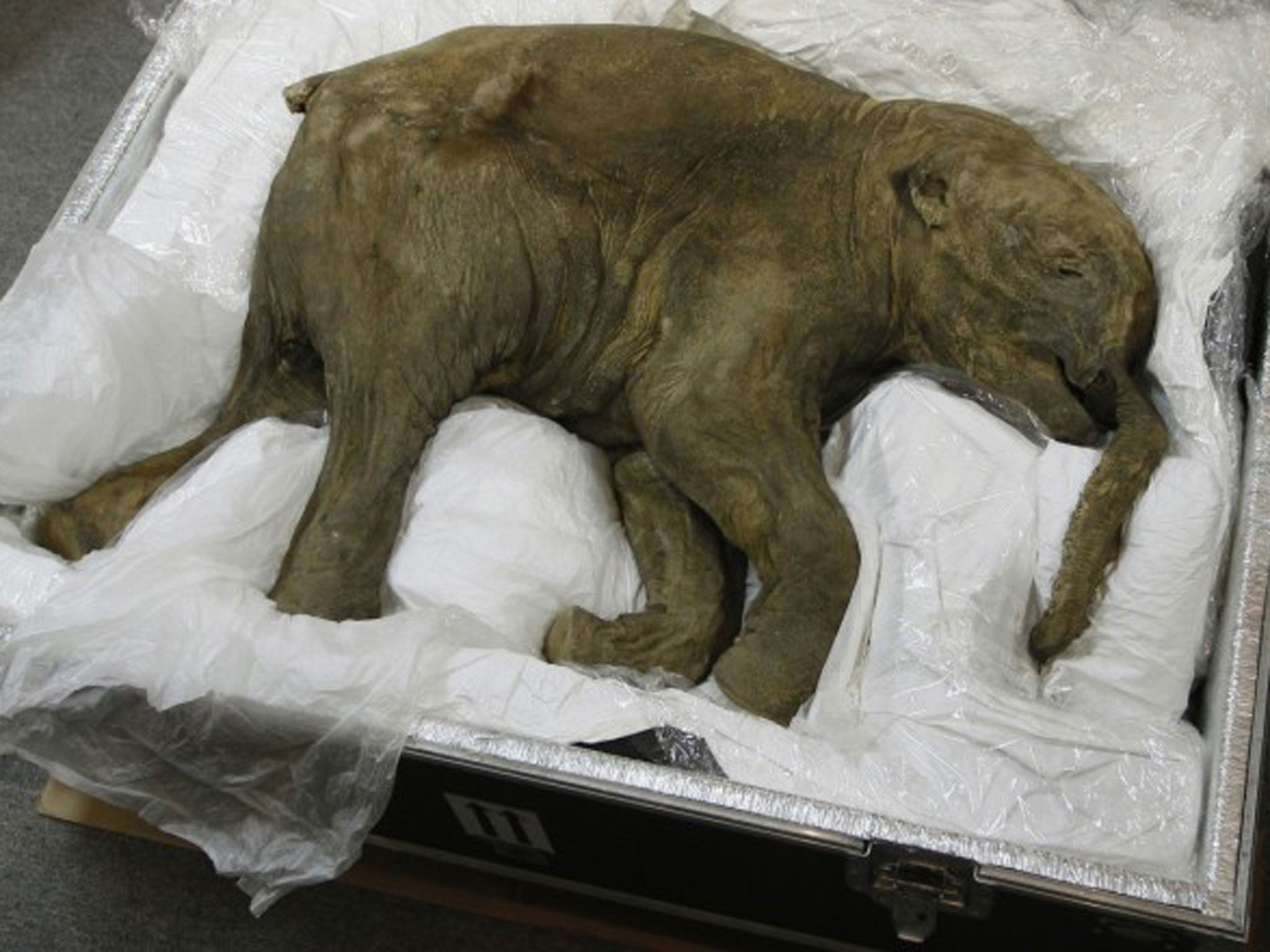World's most complete preserved mammoth to go on display in London
The baby mammoth, found in Siberia by a reindeer herder in 2007, is little larger than a dog, and has been nicknamed Lyuba

Your support helps us to tell the story
From reproductive rights to climate change to Big Tech, The Independent is on the ground when the story is developing. Whether it's investigating the financials of Elon Musk's pro-Trump PAC or producing our latest documentary, 'The A Word', which shines a light on the American women fighting for reproductive rights, we know how important it is to parse out the facts from the messaging.
At such a critical moment in US history, we need reporters on the ground. Your donation allows us to keep sending journalists to speak to both sides of the story.
The Independent is trusted by Americans across the entire political spectrum. And unlike many other quality news outlets, we choose not to lock Americans out of our reporting and analysis with paywalls. We believe quality journalism should be available to everyone, paid for by those who can afford it.
Your support makes all the difference.A 42,000 year old baby mammoth is set to go on display for the first time in Western Europe next month at the Natural History Museum.
Lubya, who was named after the wife of the Siberian reindeer herder that found her, has been described as the most complete preserved mammoth in the world.
One month old when she died, the baby mammoth’s corpse was intact enough that fragments of her eyelashes remained as well as remnants of her mother’s milk in her stomach.
"When they did the autopsy on her she is so complete that we could get a look at her insides and see her last meal,” Victoria Herridge, a paleobiologist from the Natural History Museum in London, told the Sunday Times.
"She had milk from suckling her mother and also remnants of faecal matter in her gut, which suggest she had been eating her mother's dung. This is something living elephants do as the dung provides the infants with microbes to help them ingest their food."
Lubya, which means ‘love’ in Russian, is thought to have died after stumbling into a salty marsh bog and slowly drowning in the mud. The mud then froze, preserving the body until herder Yuri Khudi and his son stumbled across it while searching for firewood by the Yuribei river in north-west Siberia.
Lubya will go on display from 23 May until 7 September 2014 as part of a new exhibition entitled Mammoths: Ice Age Giants. Other species in the exhibition will include the dwarf mammoth and the spiral-tusked Columbian mammoth.
Although some enthusiasts may be hoping that this remarkable specimen is well preserved enough to allow scientists to clone the mammoth, as Herridge notes Lubya’s DNA will have “deteriorated” significantly.
Despite the widespread belief that DNA is easily preserved and resurrected, recent research has shown that the molecule only has a half-life of about 521 years, making Jurassic Park-style cloning an impossibility for now.
Subscribe to Independent Premium to bookmark this article
Want to bookmark your favourite articles and stories to read or reference later? Start your Independent Premium subscription today.
Join our commenting forum
Join thought-provoking conversations, follow other Independent readers and see their replies
Comments